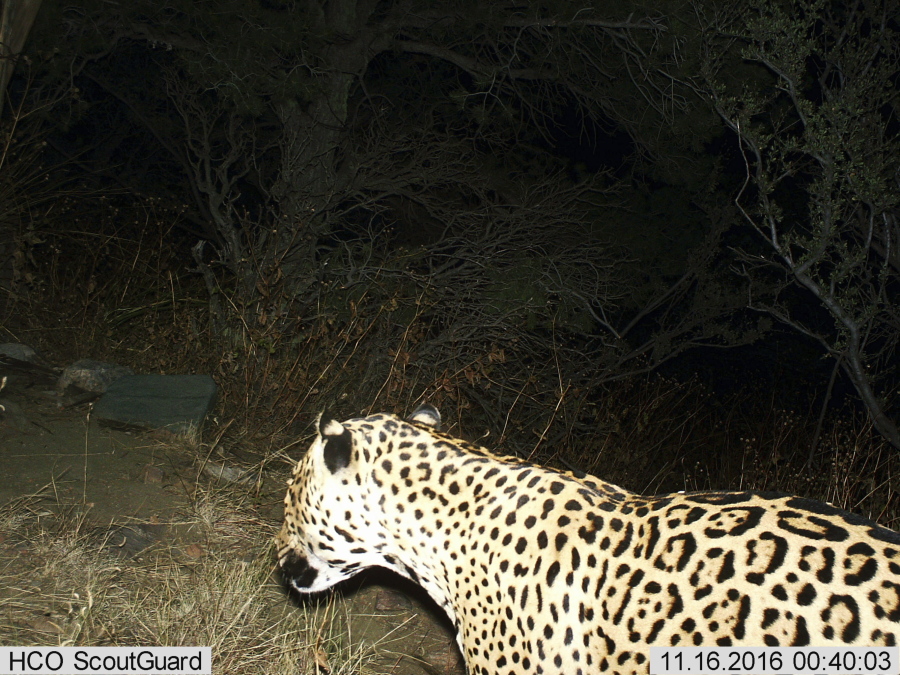PHOENIX — Wildlife officials say they have evidence of a rare jaguar sighting in the United States, giving conservationists hope that the endangered cat is re-establishing itself here.
The U.S. Fish and Wildlife Service released a photo Thursday from a trail camera that was taken in November and recently retrieved.
It shows the spotted cat wandering through the Dos Cabezas Mountains in Arizona about 60 miles north of the U.S.-Mexico border. Fish and Wildlife spokesman Jeff Humphrey said it’s the farthest north of the border that a jaguar has been seen in decades.
“The significance is that we’re getting a clearer understanding of where jaguars occur in the borderline area,” Humphrey said. It’s been decades since a jaguar was spotted in that mountain range, he said.
Officials said they can’t tell the jaguar’s gender or age from the photo. The two other jaguars that have been recently spotted were both male, and Arizona Game and Fish officials have said a female jaguar hasn’t been spotted in decades.
But conservationists think the latest sighting is evidence that the jaguar is returning to the U.S. after decades away. They say a possible border wall could stop that.
“What it means is that this majestic animal is trying to return to its homelands in the United States. There is habitat in the United States for this animal, for this beautiful cat,” said Bryan Bird, the southwest program director for Defenders of Wildlife.
Bird said he hopes the government will consider the fate of jaguars if a border wall is built, as President Donald Trump has promised.
He said it’s likely that the three jaguars spotted in the U.S. have come from Mexico through rugged areas where it would be difficult to build a wall anyway.
Bird said he hopes the discovery will persuade the U.S. Fish and Wildlife Service to amend its proposed jaguar recovery plan, which the Defenders of Wildlife says does not do enough.
The proposed plan is focused on efforts to sustain habitat, eliminate poaching and improving social acceptance of the animal rather than reintroduction.



